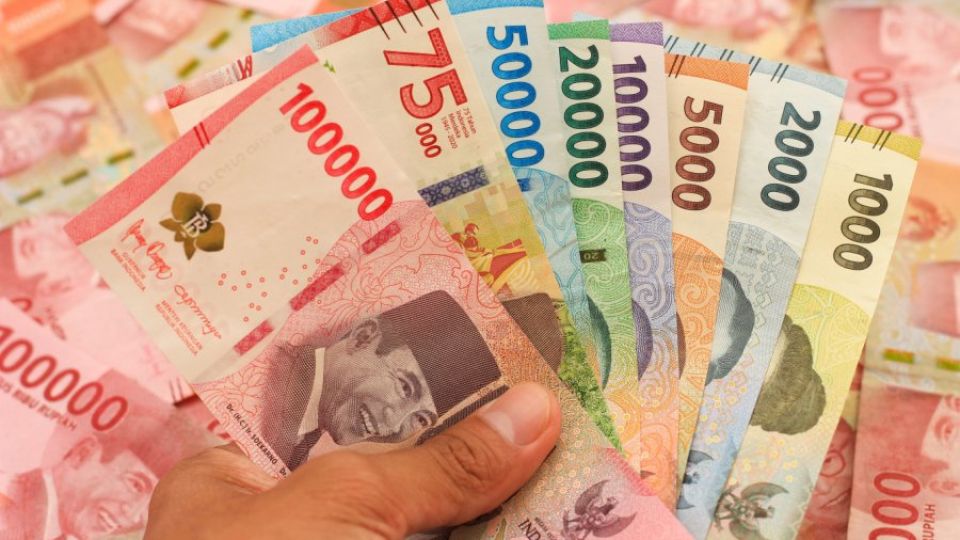October 6, 2023
JAKARTA – A rising United States dollar is putting pressure on other currencies and has sent the Indonesian rupiah to its lowest level this year.
One dollar bought just over Rp 15,622 on Thursday evening, meaning the Indonesian currency lost more than 2.3 percent over the past month. It touched a low of 15,647 on Wednesday, the lowest so far this year.
The depreciation reflects current dollar strength rather than rupiah weakness, as more market actors see indications for a hawkish near-term stance of the US Federal Reserve (Fed).
The Japanese yen dropped below the psychologically meaningful level of 150 to the greenback this week, and the US dollar index benchmark has been on a rising trend for months, gaining around 7 percent since mid-July.
Economists asked by The Jakarta Post suggested that the dollar rally would not last much longer, irrespective of whether the Fed decided to hike the federal funds rate (FFR) in November or not.
They expect the rupiah to bottom out this month, prior to the Federal Open Market Committee’s (FOMC) meeting on Nov. 1, in which the Fed makes its interest rate decisions.
Late last month, Bank Indonesia (BI) Governor Perry Warjiyo said the central bank expected the Fed to hike its key interest rates by 25 basis points (bps) in November after keeping the FFR unchanged in the September meeting.
Should that happen, the lower and upper rates for the dollar would sit at 5.5 and 5.75 percent, drawing up to BI’s rate for the rupiah at 5.75 percent, a novel situation that could increase pressure for capital outflow from Indonesia.
However, the latest data from US derivatives marketplace CME Group show that a large majority of market actors still expects no FFR hike in November.
Read also: BI sticks with inflation forecast despite high rice, oil prices
Bank Permata chief economist Josua Pardede told The Jakarta Post on Wednesday that certainty about the FFR peak “will be a breath of fresh air” for the market, even if it meant another 25-bps increase.
“Investors will buy more risky assets in emerging markets, including rupiah [assets],” said Josua on what may happen once the Fed lays down all its cards, including indications as to when the US central bank may begin to cut its benchmark rate, which is expected to happen in 2024.
He went on to say that the US real sector indicators to be released later this month would contribute to calming the dollar down.
Read also: Yen cowers near 150 as intervention chatter runs rife
BI has expressed no intention to hike its key rate further this year, nor is it under any pressure to do so from the inflation side, given that consumer price index growth has come down even faster than expected after touching a high of almost 6 percent in September last year.
Nevertheless, the central bank has made stabilizing the rupiah exchange value its priority, through direct intervention in the foreign exchange market if necessary.
BI said on Tuesday that it was also open to the possibility of buying bonds to manage yields.
“We remain present in the market to ensure a balance in [foreign exchange] supply and demand so as to build market confidence,” BI head of monetary management Edi Susianto was quoted as saying by Reuters on Tuesday.
He went on to say that the rise in bond yields and capital outflows from the country remained manageable.
Teuku Riefky, an economist from the Institute for Economic and Social Research at the University of Indonesia’s Faculty of Economics and Business, told the Post that rupiah depreciation would hurt sectors that rely heavily on imports.
“Ninety percent of our imports are auxiliary and capital goods, meaning rupiah depreciation will directly raise production cost,” said Teuku on Wednesday.
Bank Mandiri chief economist Andry “Asmo” Asmoro, meanwhile, said a weak rupiah would cause liquidity problems.
“[Any further] weakening of the rupiah is dependent on the Fed’s policy, whether it will be relatively dovish or not in next month’s FOMC meeting,” Asmo told the Post on Wednesday.
Bank BCA chief economist David Sumual said that, aside from the Fed’s monetary policy, oil prices would also affect the rupiah.
However, in his assessment the rupiah’s weakness is temporary, and Indonesia’s economic fundamentals could cushion a rupiah weakening to Rp 15,700.
“The positive side to this is that rupiah weakening is actually not entirely harmful […] and a weaker rupiah can help reduce the goods dumping from China,” David told the Post on Wednesday.
Bank Permata’s Josua pointed out that Indonesian exporters could benefit from a strengthening dollar too, especially in the manufacturing sector.
“However, amid the deteriorating global economy, exports will still face quite big challenges.”


